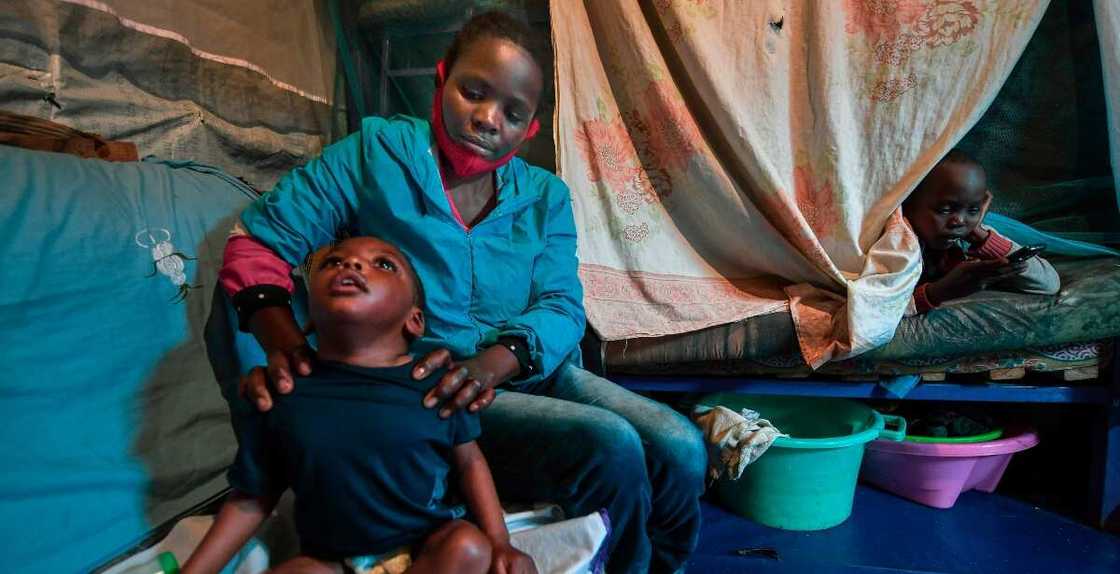6 Rare Facts About Cerebral Palsy that show it is just Another form of Normality
- March 25, 2022, has been the World Cerebral Palsy Awareness Day
- It is indicated that many Ghanaians do not understand what the condition is and end up mistreating people living with it
- YEN.com.gh compiles 6 amazing details about CP
PAY ATTENTION: Click “See First” under the “Following” tab to see YEN.com.gh News on your News Feed!
Cerebral Palsy is a medical condition that is known widely known about or understood in Ghana.
Cdc.gov defines Cerebral Palsy (CP) as a group of disorders that affect a person’s ability to move and maintain balance and posture.
According to Nancy Pearl Agyapong, a Ghanaian nurse who also works as a special needs teacher, children living with this condition are the last people some families want to see in certain parts of Ghana.
"Some babies as young as six months old are given strong locally brewed alcohol and left alone in the deleterious atmosphere in the night to face their fate. The 'logic' being that, if the child survives the next day, then the child is truly a human, if not, then he or she wasn't meant to be. Sadly, almost all the babies die and it is either due to hypoglycemia or hypothermia or both," she says.
YEN.com.gh takes a look at what CP is and some facts about it that show it is not what many Ghanaians perceive it to be.

Source: Getty Images
Enjoy reading our stories? Join YEN.com.gh's Telegram channel for more!
1. Cerebral Palsy is Not Hereditary
Cerebral palsy is not hereditary, so the chances of an adult with cerebral palsy passing down the motor disability to their child is the same as an adult without cerebral palsy.
2. Cerebral Palsy Does Not Directly Affect Cognitive Function
Although 50% of individuals with cerebral palsy have a co-occurring intellectual disability, an intellectual disability is not caused by the same source of brain damage as cerebral palsy.
According to Flintrehab.com, Intellectual disabilities are considered associated conditions of cerebral palsy because they commonly co-occur but are not directly related.
3. It has no cure but a lot of hope
There's no cure for cerebral palsy. But resources and therapies can help kids grow and develop to their greatest potential.
As soon as CP is diagnosed, a child can begin therapy for movement and other areas that need help, such as learning, speech, hearing, and social and emotional development, according to kidshealth.org.
4. Individuals with Cerebral Palsy Can Improve Motor Functions
The brain has neuroplasticity, which is its ability to rewire itself and reassign affected functions to undamaged areas of the brain.
Through intensive training that focuses on repetitions, individuals with cerebral palsy can promote neuroplasticity and improve their motor functions.
5. People living with Cerebral Palsy can be a perfect fit in society
With the appropriate services and support, children and adults with CP can stay well, active, and a part of the community.
5. CP is typically diagnosed during the first or second year after birth. If a child’s symptoms are mild, it is sometimes difficult to make a diagnosis until the child is a few years older.
6. Surgical procedures can be helpful
Surgery can help fix dislocated hips and scoliosis (curved spine), which are common in kids with CP. Leg braces help with walking.
An autism contest held in Ghana
Also on people with special needs, the first-ever edition of Verna Mr and Miss Autism Ghana was held at a grand and star-studded ceremony at the Airport View Hotel.

Read also
Man’s parents spent GHc145k to get him prosthetics when he lost both legs, now helps kids with similar fate
The event that was hosted by the Afi Antonio Foundation happened in June, to crown winners and ultimately push for the inclusion of persons living with autism in society
Our manifesto: This is what YEN.com.gh believes in
Source: YEN.com.gh



